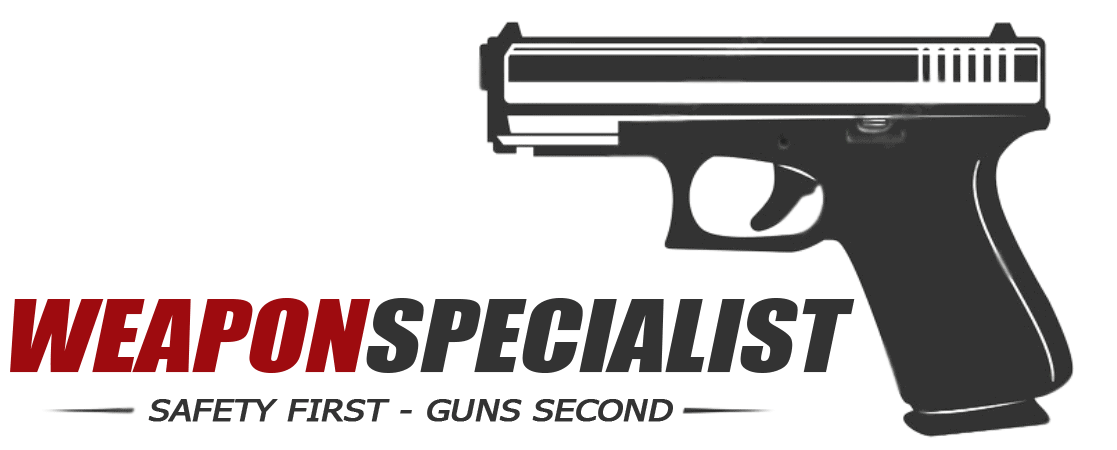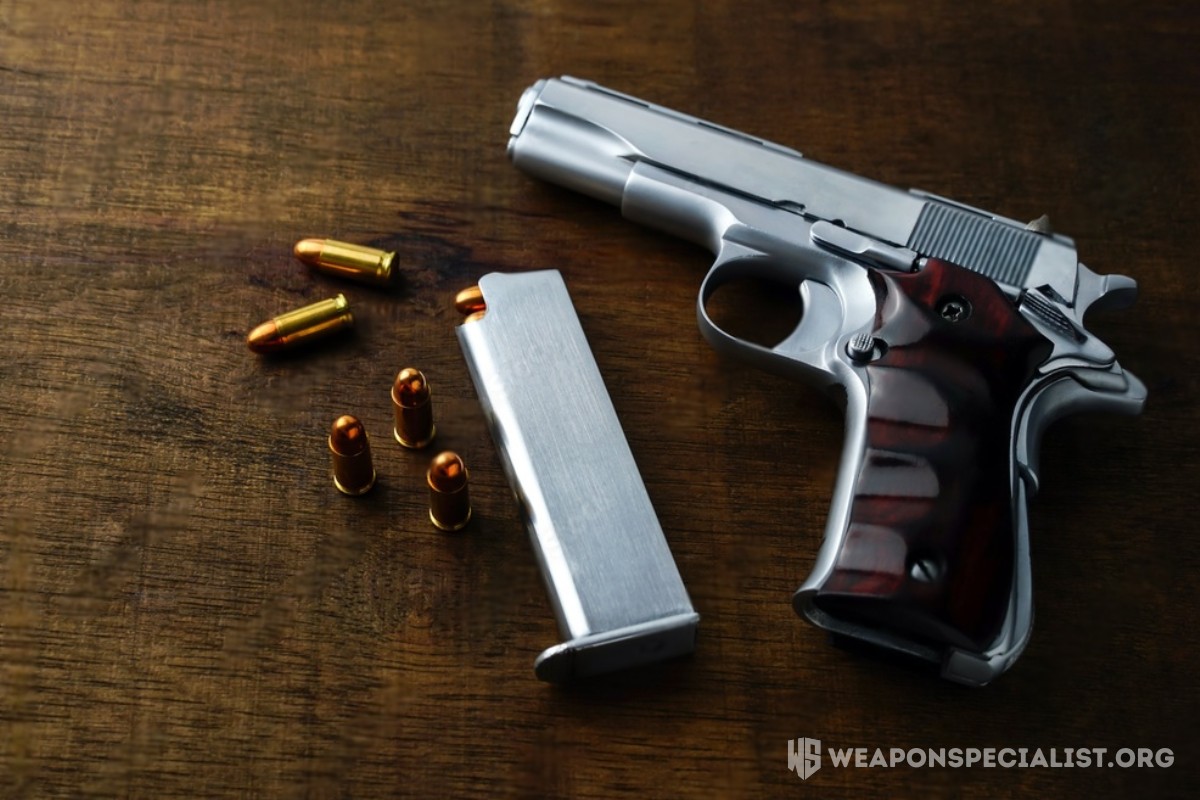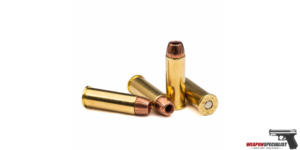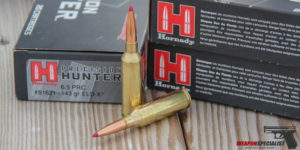When delving into the world of firearms, the choice between Hammer Fired vs Striker Fired actions is a pivotal decision that can significantly impact your shooting experience.
These two distinct firing mechanisms represent a fundamental choice for firearm enthusiasts and professionals alike, each with its own set of advantages and considerations.
In this exploration, we’ll uncover the essential differences and merits of Hammer Fired and Striker Fired firearms, providing valuable insights for those navigating this critical decision.
What is Hammer-Fired?
Hammer-fired guns are a type of firearm that use a spring-powered weight, called the hammer, to drive the firing pin into the primer.
The hammer can be either internal or external, and it may be attached or separate from the firing pin. In most cases, the hammer is visible at the gun’s rear when viewing a hammer-fired weapon.
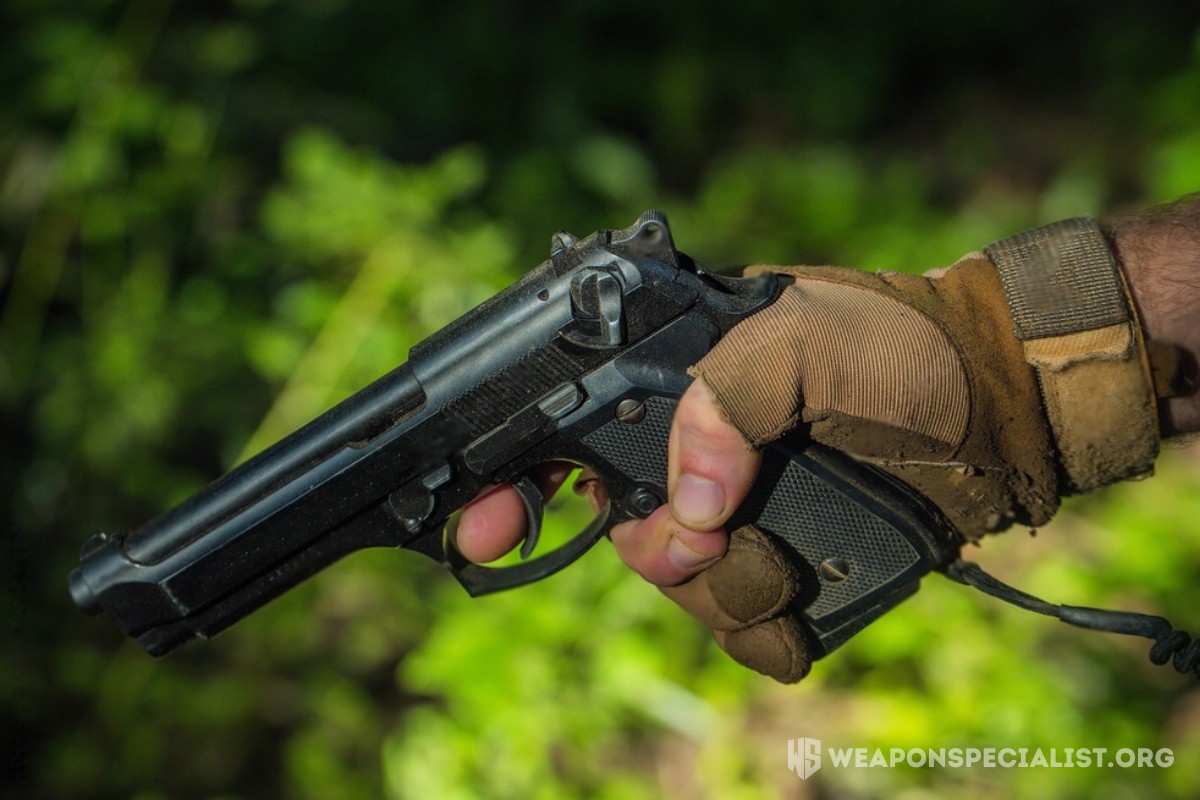
Hammer-fired guns are often associated with revolvers, particularly older models, but they can also be found in semi-automatic pistols.
They typically have a heavier trigger pull than striker-fired guns, which can make them more difficult to shoot accurately, but they can also provide a more tactile shooting experience.
One advantage of hammer-fired guns is that they often have a “second strike” capability, which allows the shooter to pull the trigger again if the first strike does not ignite the primer. This can be useful in situations where a misfire occurs and the shooter needs to quickly fire another round.
What is Striker-Fired?
Striker-fired pistols are a type of firearm that have gained popularity in recent years due to their simplicity and reliability. In a striker-fired gun, the hammer and mainspring have been eliminated from the frame.
Instead, the mainspring has been moved up into the slide and acts on the firing pin directly. Except, now, the firing pin is called a striker. Rather than being hit by a hammer, it does the hitting itself.
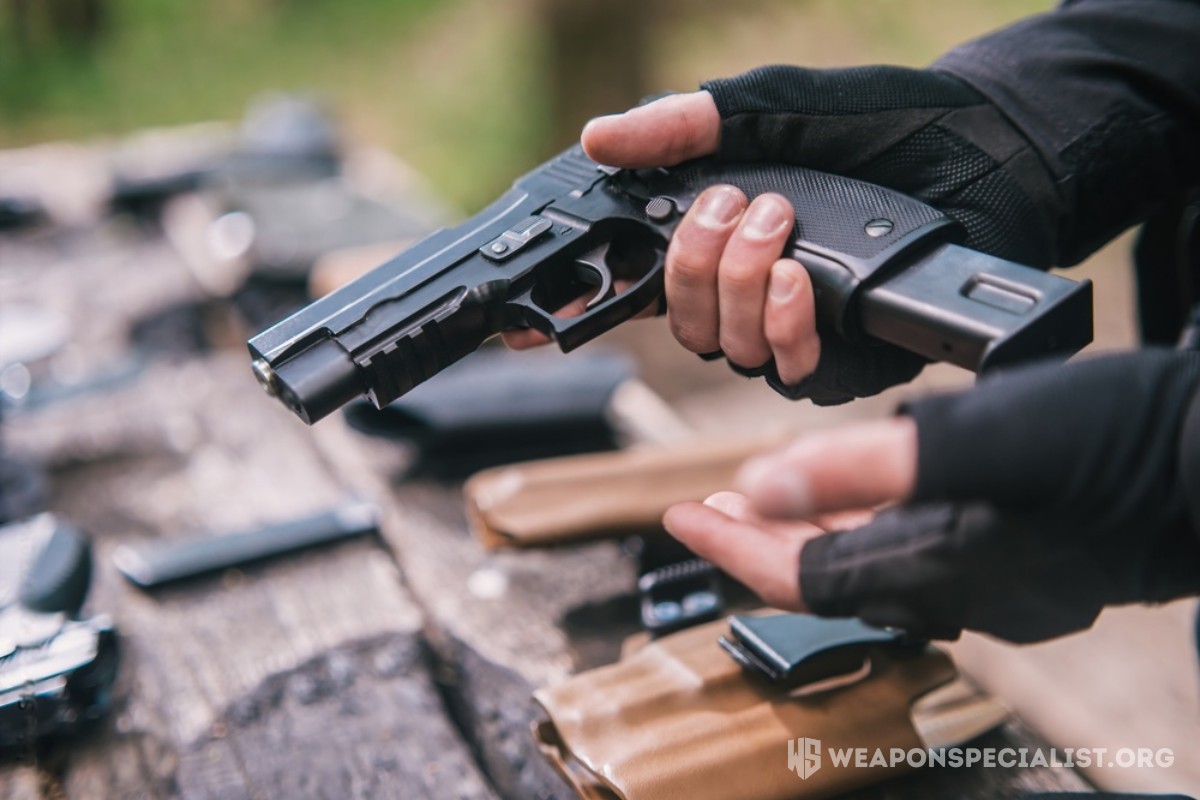
Striker-fired guns have a simpler design than hammer-fired guns, which can make them easier to maintain and repair.
They also tend to have a lighter trigger pull, which some shooters find more comfortable and easier to control.
Additionally, they have fewer parts than hammer-fired guns, which can make them more reliable and less prone to malfunction.
One downside to striker-fired pistols is that they generally have less trigger control than hammer-fired guns.
This can make it more difficult to achieve precision shots, especially at longer ranges. However, many shooters find that the benefits of a striker-fired gun outweigh this disadvantage.
Differences Between Hammer-Fired and Striker-Fired
Mechanism of Firing
Hammer-fired guns rely on a spring-powered weight, called the hammer, to drive the firing pin into the primer. The firing pin and hammer may be attached or separate, and the hammer can be internal or external.
In contrast, striker-fired guns have an internal striker that is cocked back and released when the trigger is pulled. The striker hits the firing pin, which then ignites the primer.
Trigger Pull and Reset
The trigger pull and reset are different in hammer-fired and striker-fired guns. In most cases, hammer-fired guns have a longer, harder trigger pull, which can make them more difficult to shoot accurately.
However, hammer-fired guns in single action mode typically have a better trigger than the average striker-fired pistol. In contrast, striker-fired guns have a light trigger pull, which can make them easier to shoot accurately.
The reset on a striker-fired gun is often shorter than that of a hammer-fired gun, which can make it easier to shoot rapidly.
Safety Features
Hammer-fired guns often have more safety features than striker-fired guns. For example, some hammer-fired guns have a decocking mechanism that allows the shooter to safely lower the hammer without firing the gun.
In addition, many hammer-fired guns have a manual safety that can be engaged to prevent the gun from firing. Striker-fired guns typically have fewer safety features, although some models have a trigger safety or a drop safety to prevent accidental discharges.
Maintenance and Durability
Hammer-fired guns often have more parts than striker-fired guns, which can make them more difficult to maintain and repair. In addition, hammer-fired guns are often more prone to malfunctions caused by dirt or debris.
Striker-fired guns have fewer parts, which can make them easier to maintain and repair. They are also less prone to malfunctions caused by dirt or debris, making them more durable in some cases.
Overall, the choice between a hammer-fired and striker-fired gun depends on the shooter’s preferences and needs.
Some shooters prefer the longer, harder trigger pull of a hammer-fired gun, while others prefer the light trigger pull of a striker-fired gun.
Similarly, some shooters prefer the additional safety features of a hammer-fired gun, while others prefer the simplicity and durability of a striker-fired gun.
Advantages of Hammer-Fired
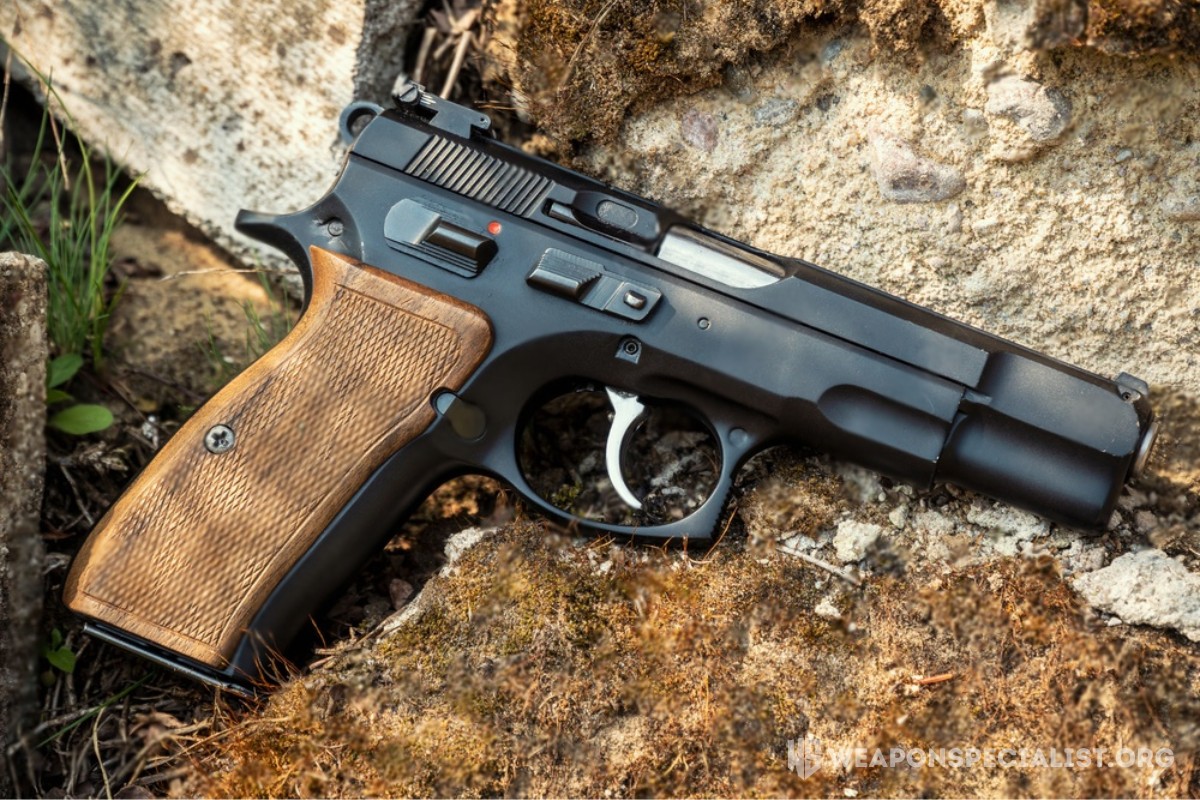
Hammer-fired guns have been around for centuries and are still widely used today. They have several advantages over striker-fired guns, including:
Accuracy
Hammer-fired guns tend to be more accurate than striker-fired guns, especially at longer ranges. This is because hammer-fired guns typically have a longer and heavier trigger pull, which allows for better control and accuracy. Additionally, the hammer provides a more consistent and predictable trigger pull, which can lead to more consistent shot placement.
Versatility
Hammer-fired guns are also more versatile than striker-fired guns. They can be fired in single-action or double-action mode, depending on the shooter’s preference.
Single-action mode provides a lighter trigger pull, which is ideal for accurate shooting at longer ranges.
Double-action mode provides a longer and heavier trigger pull, which is ideal for close-range combat situations where speed and accuracy are both important.
Reliability
Hammer-fired guns are generally more reliable than striker-fired guns. This is because they have fewer moving parts and are less prone to mechanical failure. Additionally, hammer-fired guns are less likely to experience misfires or other malfunctions, which can be critical in self-defense or combat situations.
Overall, hammer-fired guns have several advantages over striker-fired guns, including greater accuracy, versatility, and reliability. While striker-fired guns have their own advantages, such as ease of use and lower cost, many shooters still prefer the traditional hammer-fired design for its proven performance and versatility.
Advantages of Striker-Fired
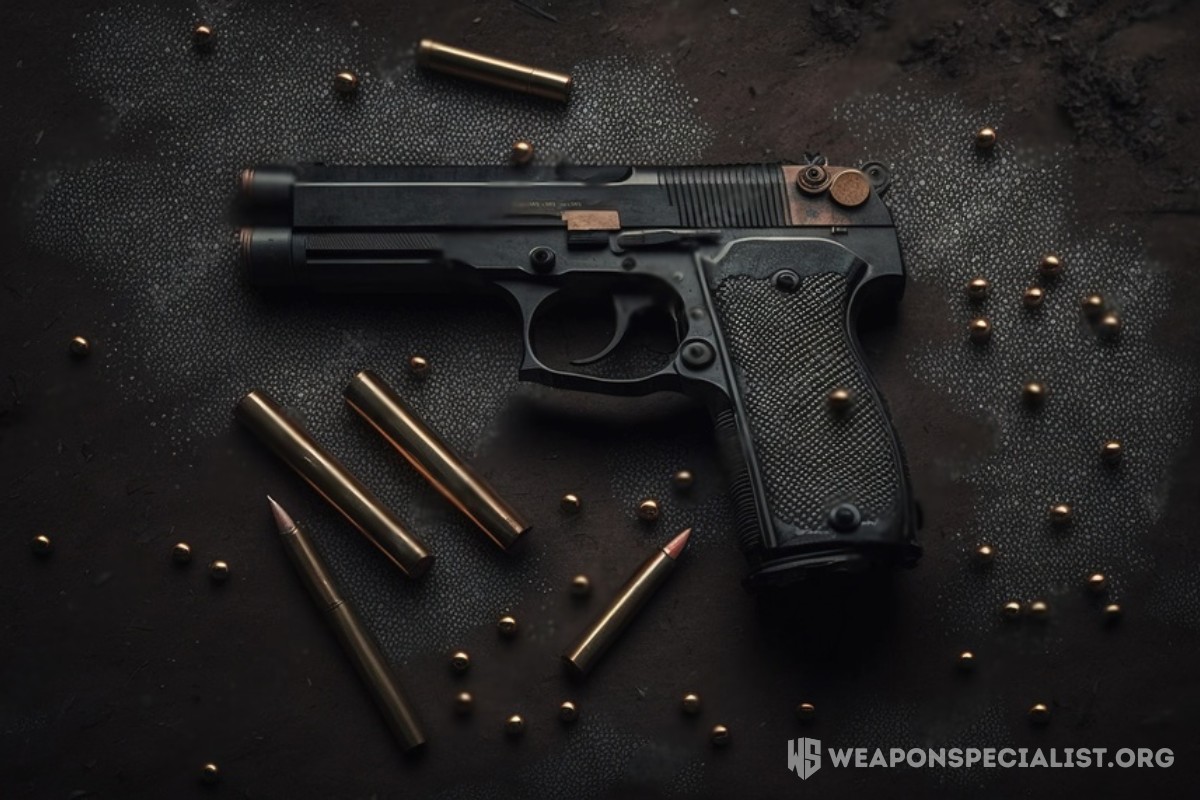
Striker-fired pistols have become increasingly popular in recent years, and for good reason. They offer several advantages over their hammer-fired counterparts.
Simplicity
One of the primary advantages of striker-fired pistols is their simplicity. These firearms have fewer components than hammer-fired weapons, making them easier to maintain and less likely to jam. With fewer moving parts, striker-fired pistols are also generally more reliable and durable.
Additionally, striker-fired pistols are often less expensive than hammer-fired weapons due to their simpler design. This makes them an attractive option for those on a budget who still want a reliable firearm.
Consistency
Another advantage of striker-fired pistols is their consistency. Unlike hammer-fired weapons, which require the hammer to be manually cocked before firing, striker-fired pistols have a consistent trigger pull every time. This makes it easier for the shooter to maintain accuracy and control, especially in high-stress situations.
Furthermore, striker-fired pistols tend to have a lighter trigger pull than hammer-fired weapons. This can be an advantage for those who prefer a lighter trigger or have difficulty pulling the trigger on heavier firearms.
Ease of Use
Finally, striker-fired pistols are often easier to use than hammer-fired weapons. They typically do not have a manual safety, which can be a disadvantage for some shooters. However, this also means that the shooter does not have to worry about disengaging the safety before firing, making the firearm quicker to deploy in self-defense situations.
Striker-fired pistols also tend to be lighter than hammer-fired weapons, which can be an advantage for those who need to carry their firearm for extended periods of time.
Overall, striker-fired pistols offer several advantages over hammer-fired weapons, including simplicity, consistency, and ease of use. While they may not be the best option for every shooter, they are certainly worth considering for those in the market for a new firearm.
Should You Choose Hammer-fired or Striker-fired?
When it comes to choosing between hammer-fired and striker-fired handguns, there is no clear winner. Both have their advantages and disadvantages, and the choice ultimately depends on personal preference and intended use.
Personal Preference
Some shooters prefer the traditional feel and sound of a hammer-fired gun, while others prefer the simplicity and ease of use of a striker-fired gun. It is important to handle both types of guns and see which one feels more comfortable and natural to use.
Intended Use
The intended use of the gun is also an important factor to consider. Hammer-fired guns tend to have a more accurate and consistent trigger pull, making them a better choice for precision shooting or competition. Striker-fired guns, on the other hand, are generally easier to operate and are a better choice for self-defense or law enforcement use.
Budget
Another factor to consider is budget. Striker-fired guns are generally less expensive than hammer-fired guns, making them a better choice for those on a tight budget.
However, there are high-end striker-fired guns that can be just as expensive as hammer-fired guns, so it is important to research and compare prices before making a decision.
In the end, the choice between hammer-fired and striker-fired guns comes down to personal preference, intended use, and budget. Shooters should handle and test both types of guns before making a decision, and choose the one that feels most comfortable and natural to use for their intended purposes.
FAQs
Q: Why is hammer fired better?
The superiority of hammer fired systems is subjective and depends on individual preferences and use cases. Some may prefer hammer fired pistols due to their traditional and often smoother trigger pull, allowing for more precise shooting.
Additionally, hammer fired guns often offer a single-action mode, enhancing accuracy for experienced shooters. However, it’s essential to recognize that striker fired systems also have their advantages, such as simpler designs and fewer external parts.
Q: Is striker fired more reliable?
Striker fired systems are generally considered to be very reliable. Their simpler design with fewer moving parts can lead to increased durability and reduced risk of malfunctions.
Furthermore, the consistent trigger pull of a striker fired pistol may contribute to enhanced accuracy over time. However, it’s important to note that the reliability of any firearm is influenced by various factors, including maintenance, ammunition quality, and proper handling.
Q: Are hammer fired pistols more reliable?
Hammer fired pistols can be reliable as well, especially when well-maintained and of high-quality craftsmanship. While they may have more external parts than striker fired guns, this does not necessarily make them less reliable.
Some shooters appreciate the added features and options provided by hammer fired designs, including the ability to switch between single-action and double-action modes.
Q: Does Glock use a hammer?
No, Glock pistols do not use a hammer. They are designed with a striker fired system, where the firing pin is partially cocked by the movement of the slide and then fully cocked and released when the trigger is pulled.
Q: Are hammer fired pistols outdated?
While some may view hammer fired pistols as traditional or older designs, they are not necessarily outdated. Many modern hammer fired handguns incorporate advanced features and technology, making them competitive with striker fired models.
The choice between hammer fired and striker fired largely depends on individual preferences and the intended use of the firearm.
Conclusion
In conclusion, exploring the differences between Hammer Fired vs Striker Fired systems has been both enlightening and informative.
We have delved into the distinct mechanics, advantages, and considerations of each firing mechanism, gaining a better understanding of their impact on firearm performance and user preferences.
However, the realm of firearms is vast and ever-evolving, and there is much more to learn beyond this comparison. We strongly urge our fellow enthusiasts to continue their quest for knowledge by following and reading other insightful articles at weaponspecialist.org.
Expanding our understanding of firearms ensures that we remain responsible and well-informed owners, fostering a safe and enjoyable shooting experience for everyone.
Last Updated on October 28, 2023 by
